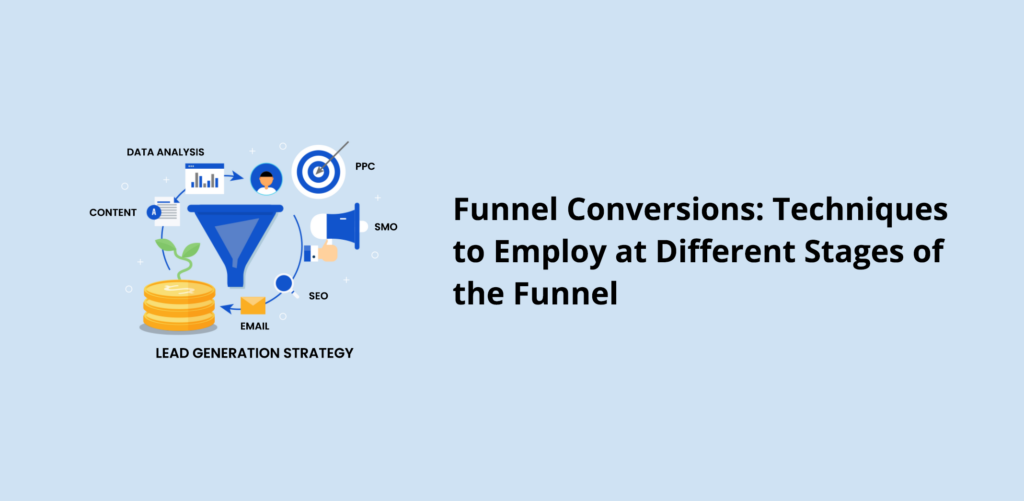Hey, savvy marketers! We all know that a well-structured funnel is key to success. But how do you engage your target audience effectively at every stage of the sales journey? And with so many strategies out there, which one is the real winner?
In this article, we’ll dive deep into the world of funnel conversions and show you how to engage your target audience at every step of the sales process.
Now, some of you might have heard about the trendy new ‘flywheel’ concept. Spoiler alert – it’s just a fancy repackaging of the good old funnel. After all, the secret to great marketing is speaking to your audience’s language and catering to their unique needs.
So let’s stick with what we know works and transform those leads into loyal customers. Ready, set, funnel-ize!
What Is a Marketing Funnel?
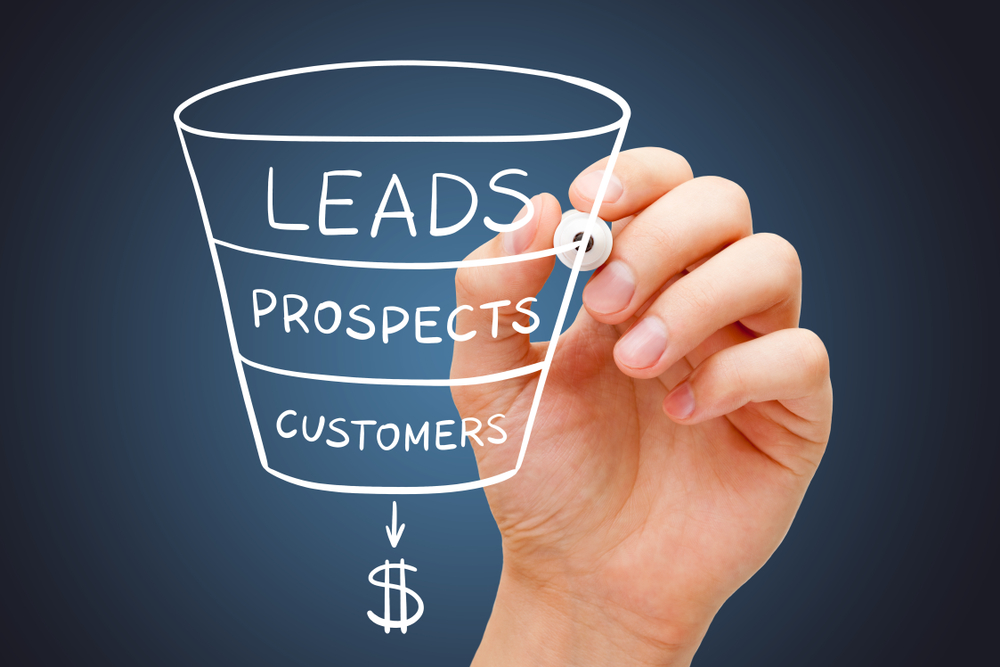
So let’s start with the classic question! In the most easiest words, A marketing funnel is a representation of the customer’s purchasing path. It signifies the phases a person goes through, from initial awareness of a business, service, or product, to the final buying decision.
The funnel’s narrowing shape symbolizes the gradual reduction in the audience size as they progress toward a purchase. While it’s essential to decrease dropouts, it’s normal for some individuals to drop off at each step. Your most promising leads will make it to the end.
Marketing funnels often follow the ‘AIDA’ pattern:
- Awareness
- Interest
- Desire
- Action
What is the AIDA Model?
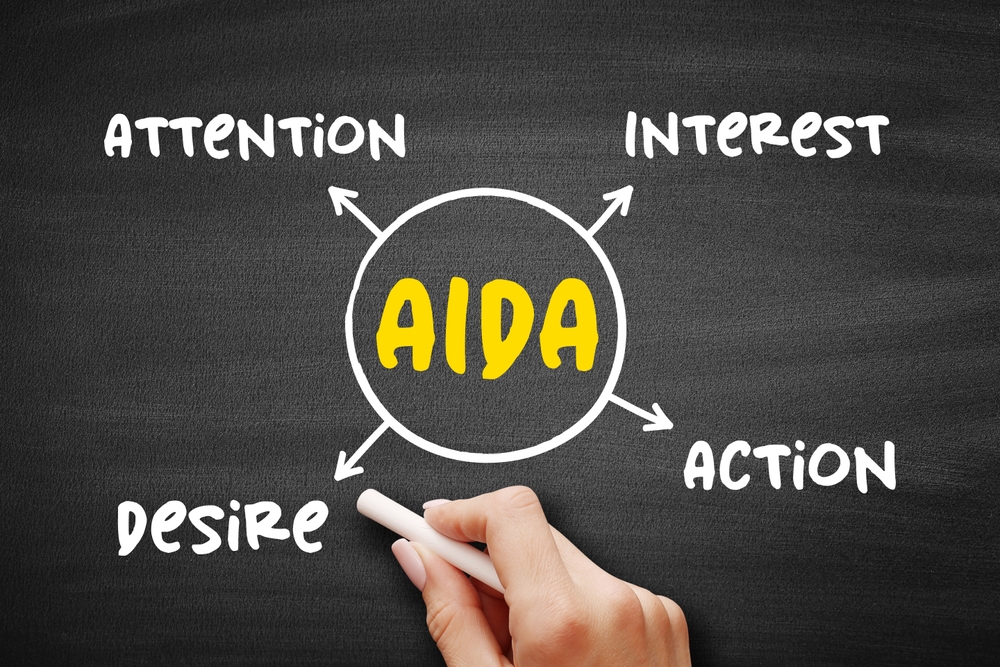
You’ve probably used a funnel while cooking, right? It helps guide all the liquid into a container without any spillage. A marketing funnel works on a similar idea, except instead of liquid, we’re guiding potential customers through their journey to making a purchase.
1. Awareness
Imagine a real-life funnel. It’s wide at the top and narrow at the bottom, right? Now, think of the top part as the ‘Awareness’ stage. This is where you draw a large crowd toward your business or product. At the top of the funnel, it’s all about making your company known to potential customers It’s like throwing a big net out to the world through advertisements, social media, and blogs.
Let’s say; you own an eco-friendly crafts store. You could run an online advertising campaign emphasizing the importance of sustainable living and the impact of eco-friendly products. Or share social media posts & write blog posts relating to handmade crafts.
The goal here is to connect with people’s interests and values, making your brand stand out and piquing their curiosity to learn more about your offerings.
2. Interest
As we move lower into the funnel, it starts getting narrower. This is the ‘Interest’ stage. The crowd you attracted at the top of the funnel is now getting to know your product or business better. They’re intrigued by what you offer and want to learn more. This could be through engaging emails, or informative articles, or videos.
In the ‘Interest’ stage, potential customers of the eco-friendly crafts business evolve from casual observers to curious explorers seeking to know more about the products. This curiosity is fueled not just by the crafts themselves but also by the stories behind them.
Sharing these stories, perhaps through a YouTube series, builds an emotional bond with the audience and underscore the brand’s transparency and authenticity. These narratives cater to consumers’ fondness for storytelling, desire for connection, and commitment to sustainability. In essence, this stage engages curiosity and emotion to deepen the audience’s relationship with the brand.
3. Desire
Then, we go further down to an even narrower part of the funnel, the ‘Desire’ stage. Now, your potential customers are not just interested, but they actually want your product. They can see how it will benefit them, and they’re comparing it to other products in the market. You can boost their desire with positive reviews, special offers, or detailed product features.
In the ‘Desire’ stage, the audience has moved from mere curiosity to considering purchase. They’re now eager,this desire can be amplified by customer testimonials and ratings, which serve as social proof, reassuring potential customers of product quality. Limited-time discounts or product bundles can further boost desire by invoking the scarcity principle, making customers act swiftly to avoid missing out.
Essentially, this stage is about intensifying anticipation and transforming ‘interest’ into ‘desire’ using psychological triggers like social proof and scarcity
4. Action
Finally, we reach the narrowest part of the funnel, the ‘Action’ stage. This is the goal – where a potential customer makes a purchase and becomes a confirmed customer. It’s the happy ending where they’ve bought your product.
For example: The customer decides to make a purchase. The e-commerce business could ensure a user-friendly shopping experience, offer secure payment options, or provide a hassle-free return policy.
Psychologically, this stage is about facilitating this decision by reducing barriers and building trust.
User-friendly shopping experiences encourage action by making the purchasing process smooth. Secure payment options feed into customers’ need for safety and trust, making them more comfortable to proceed. Lastly, a hassle-free return policy helps to minimize post-purchase dissonance (the fear of making a wrong decision), thereby encouraging customers to take the final step of purchasing.
💡Did You Know: A study by the Baymard Institute showed that complex checkouts are the reason for 21% of online shopping cart abandonments.💡
Funnel Techniques for Different Stages
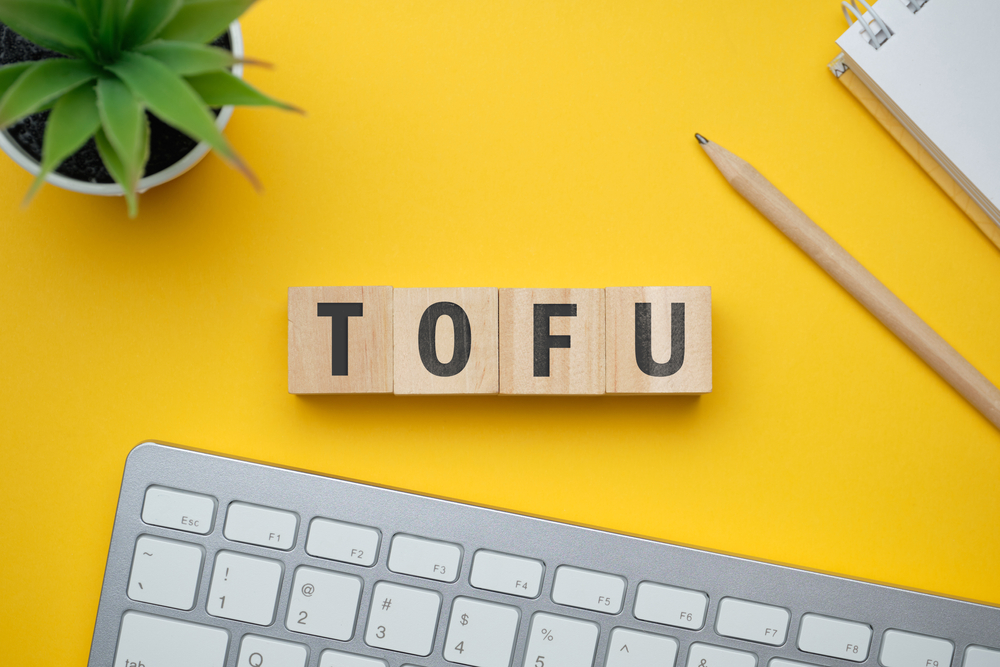
Top of the Funnel: Awareness Stage
The top of the funnel (TOFU) is all about creating awareness and attracting as many potential customers as possible. At this stage, consumers are just identifying their problem or need and starting to look for information.
- Content Marketing: Content is king in this stage. Engaging blog posts, videos, infographics, and webinars can draw people in and start building a relationship. The aim is to provide value, establish your brand as a reliable source of information, and create a positive first impression.
- Search Engine Optimization (SEO): Optimize your website and content to rank higher on search engine results pages. By targeting relevant keywords and implementing technical SEO best practices, you’ll make it easier for potential customers to find you during their research phase.
- Pay-Per-Click (PPC): If SEO is a marathon, think of PPC as a sprint. While SEO strategies help improve your organic (non-paid) search ranking over time, PPC advertising can put you right at the top of the search results almost instantly. Platforms like Google Ads or Bing Ads can help you target specific keywords and demographics. Even social media platforms like Facebook and LinkedIn offer PPC advertising options. The beauty of PPC is that you can reach people who are already interested in what you’re offering, making it an effective strategy to raise awareness quickly.
- Social Media Marketing: Building a strong social media presence can extend your reach and attract potential customers. Share valuable content, interact with your followers, and use targeted ads to increase brand awareness.
💡Tip: Consider using lead magnets such as free trials and valuable content to attract potential customers in the awareness stage.💡
Middle of the Funnel: Consideration Stage
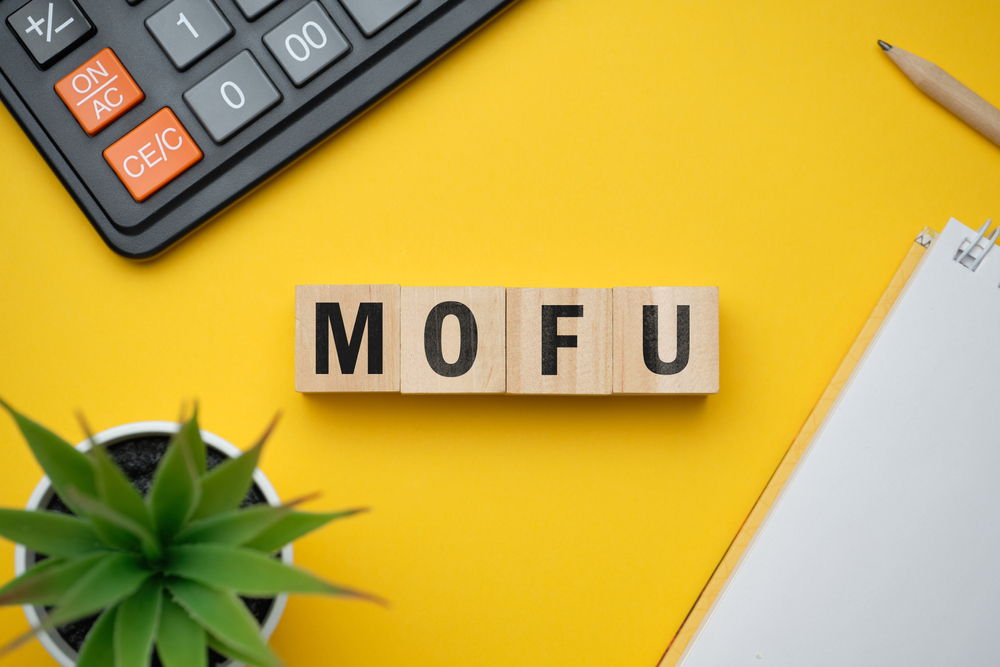
At the Middle of the Funnel (MOFU), consumers are aware of their problem and your solution and are comparing options. Your goal here is to nurture these leads and build a stronger relationship.
- Email Marketing: This is an effective way to nurture leads in the consideration stage. Regularly send valuable content, exclusive offers, and personalized messages to make them feel special and keep your brand top-of-mind.
- Retargeting Ads: Not all visitors will convert right away. Retargeting ads follow these visitors around the web with tailored ads based on their browsing behavior on your site, reminding them of your brand and offerings. Additionally, retargeting ads are also highly effective in the BOFU stage, subtly nudging customers who have shown interest to complete the purchase process.
- Case Studies and Testimonials: Showcase how your product or service has helped others. This social proof can be a powerful factor when leads are comparing options and deciding which solution to choose.
Bottom of the Funnel: Decision Stage
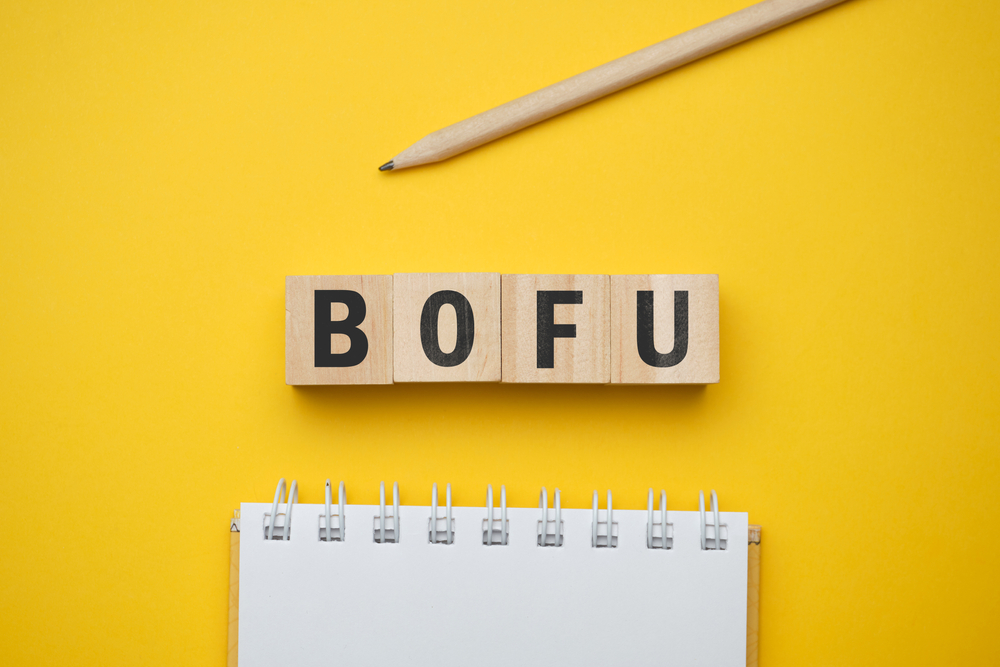
The Bottom of the Funnel (BOFU) is where potential customers are ready to make a decision. Your task is to persuade them that your product or service is the right choice.
- Free Trials and Demos: If applicable, offer free trials or product demos. This allows prospects to see the value of your solution firsthand, increasing the likelihood of conversion.
- Sales Calls: At this stage, direct interaction can be beneficial. Personalized sales calls can address any last-minute objections or questions, helping to guide leads to a purchasing decision.
- Discounts and Incentives: Offering limited-time discounts or exclusive bonuses can create a sense of urgency and make the decision to purchase easier.
After the Funnel: Retention Stage
Once a prospect has become a customer, your goal is to retain them. Happy customers are more likely to make repeat purchases and refer others to your brand.
- Excellent Customer Service: Provide prompt, helpful customer service to resolve any issues. This will show customers you value them and foster loyalty.
- Customer Surveys and Feedback: Regularly ask for and act on customer feedback. This shows that you care about their experience and are always striving to improve.
- Regular Updates and Continued Value: Keep customers engaged with regular content updates, continued education, and special offers for existing customers.
Ending Note
In conclusion, the customer journey is rarely linear, but understanding the marketing funnel concept and tailoring your efforts to each stage can make a significant difference in your conversion rates.
The right mix of strategies at each stage of the funnel, tailored to your audience’s specific needs and behaviors, can help guide your prospects toward conversion more effectively.
So, optimize each stage, experiment with different techniques, and track your results to find the most effective strategies for your brand.

